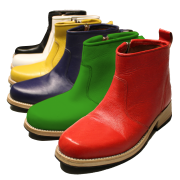About
OpenShoe is an academic project for creating an open source embedded foot-mounted INS implementation. The project contain both hardware and software components all of which are documented and released under open source licenses. Our motivation for the project has been to
- To provide a research vehicle for our research on the foot-mounted systems themselves.
- Create a thorough and well-documented embedded implementation for ourself.
- Give other researchers a short-cut to a simple working implementation thereby setting a baseline in the field.
To have a solid and well-documented implementation is a necessity for our future research activities within indoor positioning. The current use span from being a subcomponent in larger positioning system to being used as a stand alone component for research within the foot-mounted INS field.
The desire to provide a baseline implementation comes from our observations of many poor implementations and measurement setups and our own experience of all small details that can go wrong. The value of an embedded implementation is the modularity and the small weight, bulk, and price in comparison with the typical sensor-plus-laptop research systems. This alleviates the work of integration in larger real-time navigation systems and makes it possibility to equip a large number of users with sensors for field performance tests and cooperative navigation studies. Our hope is that this implementation will save time, sweat, and tears for navigation researchers and facilitate the use of foot-mounted inertial navigation by researchers not specialized in inertial navigation, e.g. in fields such as biomedical engineering, behavioral science, and ubiquitous computing.
The first generation of the foot-mounted INS modules was built during the fall and winter of 2011–2012 by KTH (KTH Royal Institute of Technology, Stockholm, Sweden) researchers working at IISc (Indian Institutet of Science, Bangalore, India). Over the period 2012–2013 we primarily worked with system level aspects of these modules and developed the statistical modularization which lets us use only the “step-updates” while still reproducing the statistics of the complete system on a higher system level. During 2014 the modules were revised and the made smaller, wireless, cheaper and better.


 OpenShoe is an open source project for creating an embedded foot-mounted
OpenShoe is an open source project for creating an embedded foot-mounted